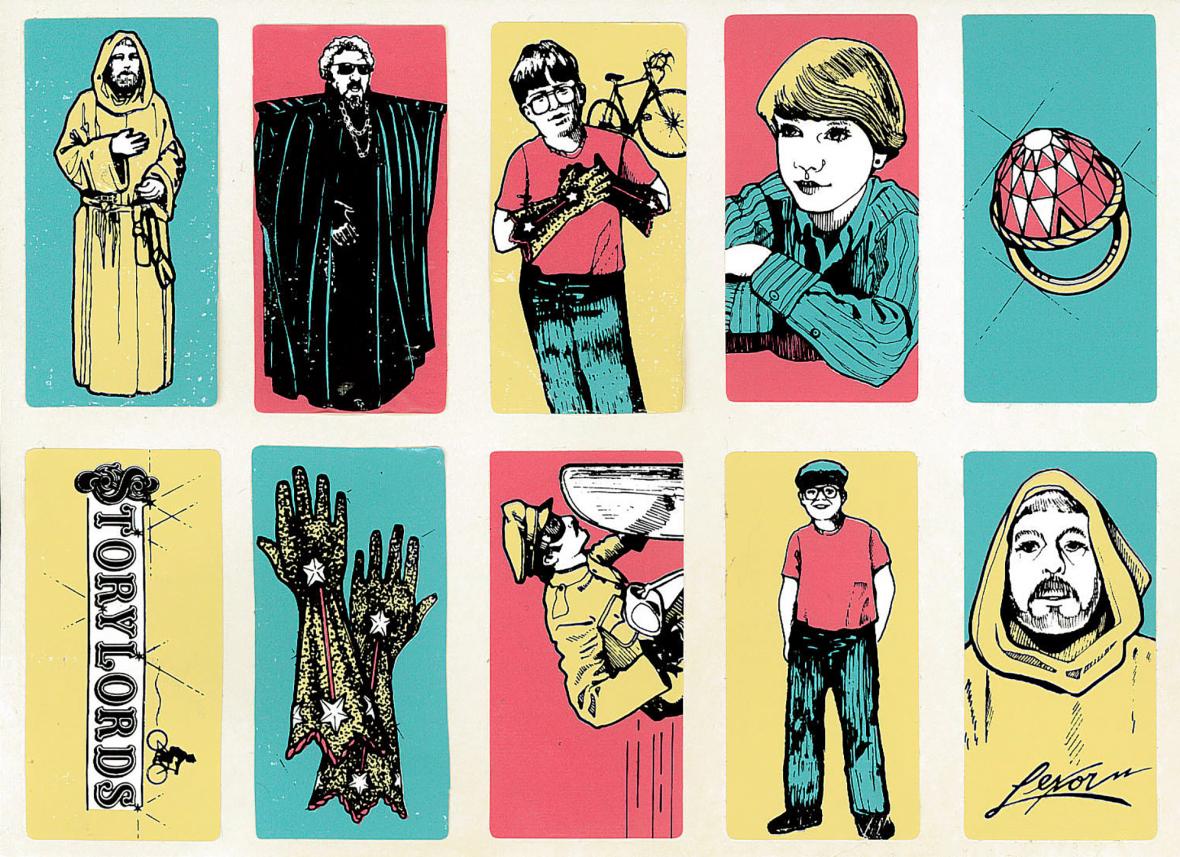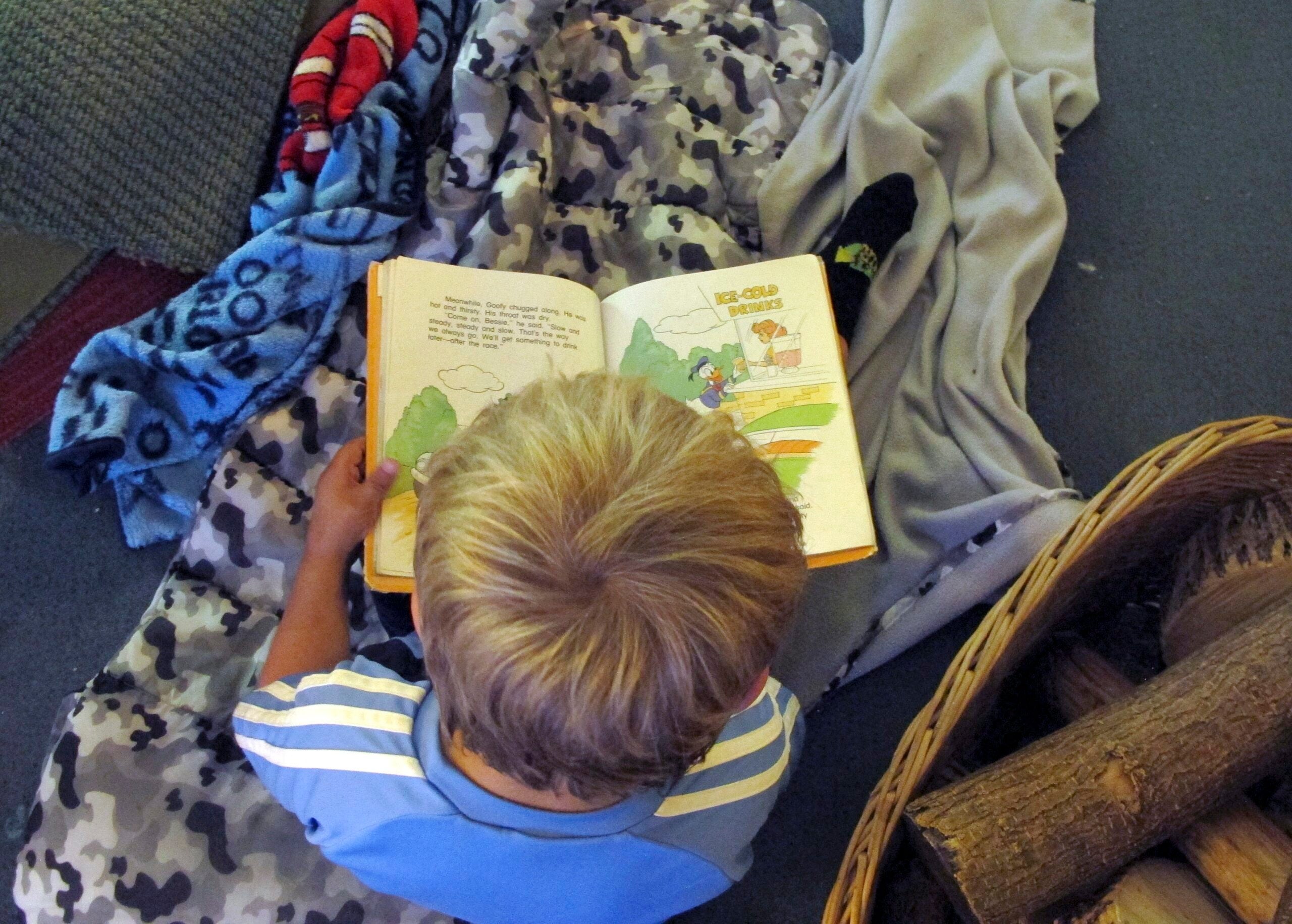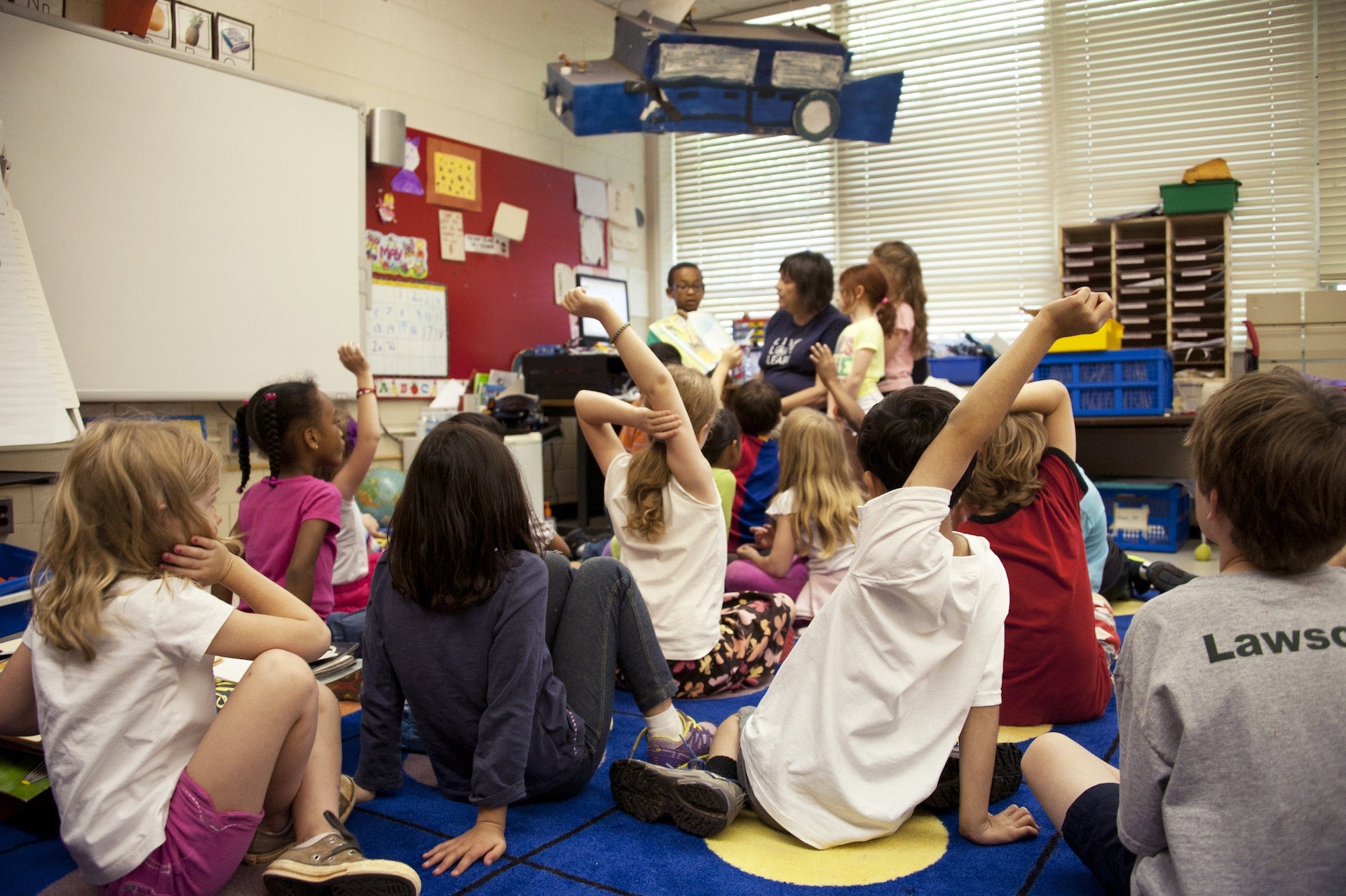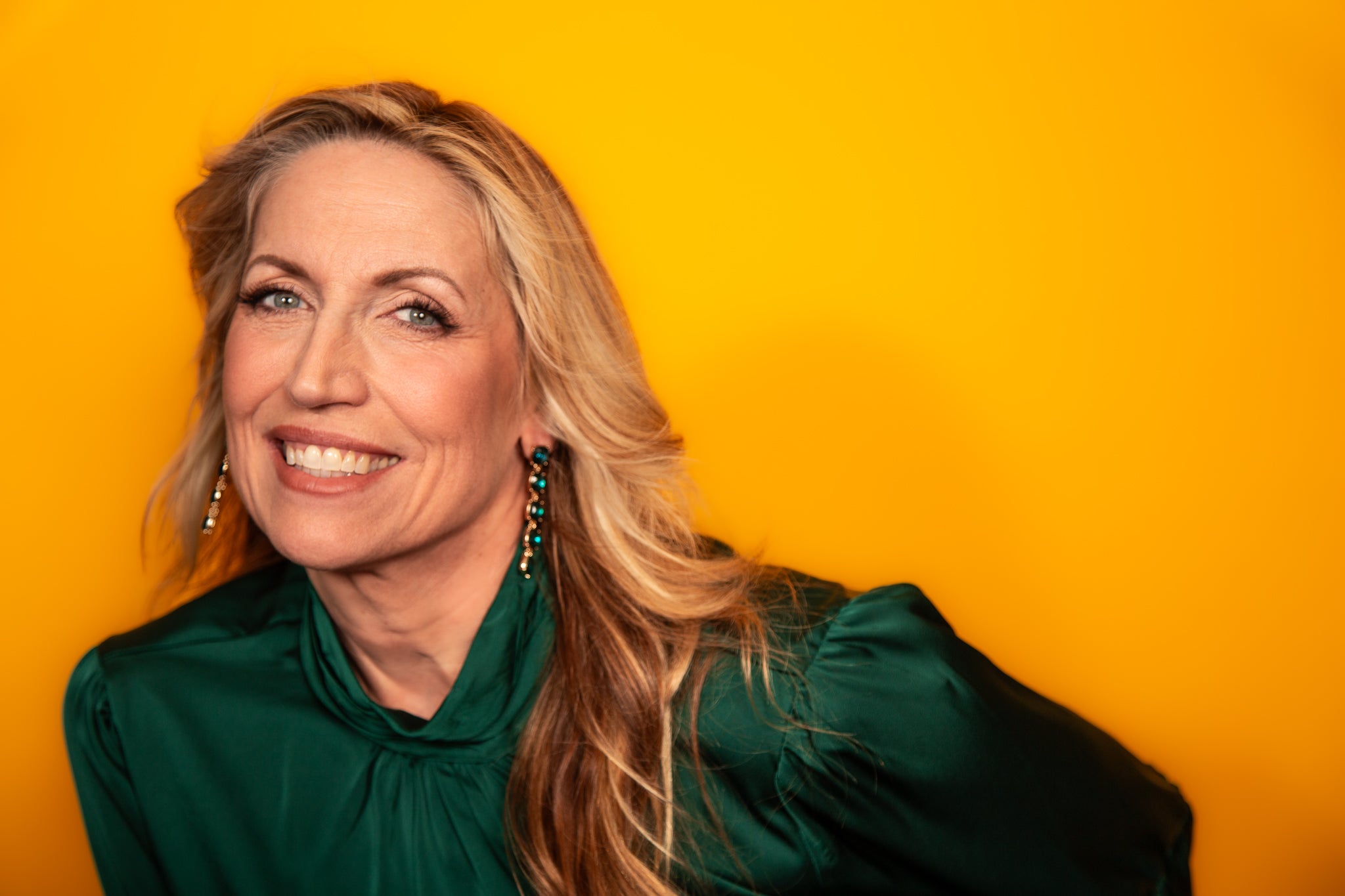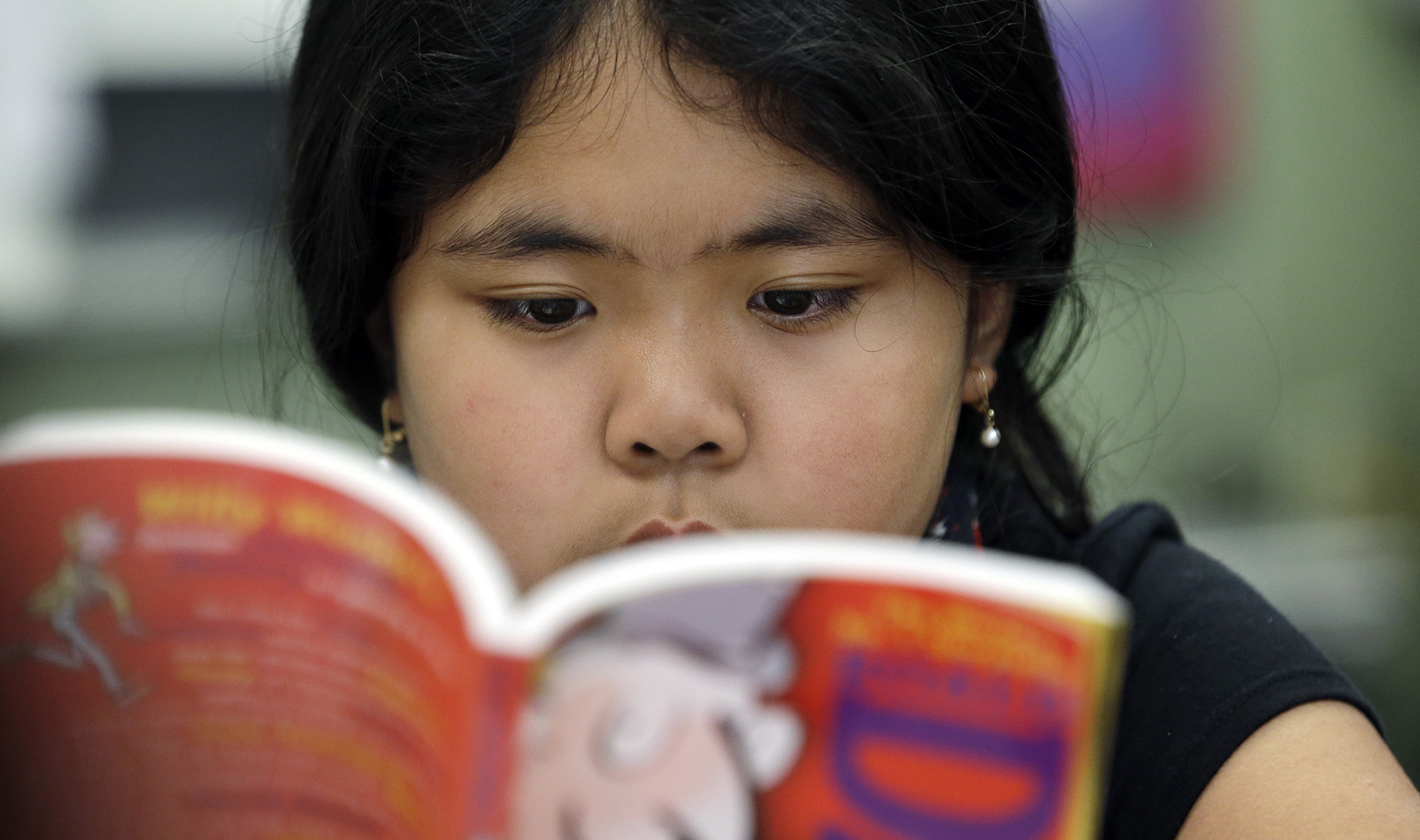Many of us were obsessed with certain PBS shows as kids. “Zoom,” “3-2-1 Contact,” “Reading Rainbow,” Ghostwriter,” “Where In The World Is Carmen Sandiego,” and more.
But today, we’re going to focus on one particular show: “Storylords.”
Nick Drozdowicz, who grew up in Madison, recently rediscovered the show at a bar in Seattle: “Right as things were starting to clear up, for some reason I remembered this show I used to watch as a kid on Wisconsin Public Television. It happened to be ‘Storylords,’” he said.
Stay informed on the latest news
Sign up for WPR’s email newsletter.
Drozdowicz and the bartender pulled up the show on YouTube and watched all 12 episodes that night.
“It was 115 percent as strange as I remember it being,” he said.
Tara Tschillard and Lydia Roussos, employees at Wisconsin Public Radio and the University of Wisconsin-Madison, were also thrilled to rediscover the show had a second life online. They recently reminisced over some of the show’s quirky details.
“I remember the gold glitter gloves and the bike trainer specifically,” said Tschillard.
“I wanted a glitter glove!” Roussos chimed in. “And the characters. Show us more Thorzuul, Milkbreath or the wizard guy, Lexor!”

Norbert and Mandy, center, help solve one of Thorzuul’s riddles wearing their classic golden gloves. Screen grab from “Storylords”
Roussos, Tschillard, and Drozdowicz are like many Wisconsin students who grew up watching “Storylords” in the 1980s and 1990s. They’re part of an enthusiastic fan base who remember the TV cart being wheeled into the classroom for “Storylords” day.
The sci-fi adventure show was created for second-, third-, and fourth-grade students to reinforce reading lessons. “Storylords” aired in classrooms and on PBS stations across the country. It’s also a Wisconsin original, developed by the Educational Communications Board at the University of Wisconsin-Stout.
“Storylords” centers around two siblings, Norbert and Mandy, who were chosen to be Apprentice Storylords. Together, they help Lexor — who looks like “Star Wars’” Obi-Wan Kenobi — save people on the planet of Mojuste by solving reading puzzles. To get there, they put on gold glitter gloves, hop on the Bike-O-Tron and read the incantation: “Thunder and Lightning, Trumpets and Drums, Readers Rejoice, A Storylord Comes!“
If they don’t solve the puzzle, the evil Thorzuul along with his sidekick Milkbreath, will turn everyone to stone.
Spoiler alert: Norbert and Mandy foil him every time!
“When I was a kid, I found it to be pretty compelling and I found it to be edgy,” Drozdowicz said. “There’s something that seemed dark. Like people watch Law & Order: SVU or the X-Files now. I guess “Storylords” was my version of that.”
Nearly 25 years after watching the show from their Madison elementary school classrooms, Drozdowicz, Tschillard, and Roussos had lingering questions about “Storylords.” So Wisconsin Life’s Maureen McCollum went out to find the answers.
The following has been edited for brevity and clarity.
Roussos: I want to know about production. How did this show get made? Show me the sausage!
Ed Jakober (director and producer of “Storylords”): We had a local WPT production outlet here (in Menomonie). We were assigned most of the educational programming from ECB. That was based on whatever the need was in Wisconsin at the time. We produced a children’s health program, reading, social skills, math.
We spent two years on the program. The first year-and-a-half was spent on research, methodology, reading strategies and the educational process. Then, we hired writer Jed MacKay, who should take credit for all of this … He came up with the “Storylords” concept.
We filmed around town, away from the studio … Thorzuul’s lair? OK let’s go inside Mabel Tainter Theater or the library. We filmed at Menomonie East School — it still stands. All the kids would show up. We’d set up a wide shot in the classroom, then they’d go outside and play. After a while, we’d have them do lines. We’d do at least two (episodes) every day in the school.
As for the actors, all the extras we got from the UW-Stout theater department. The kids were just kids.
Roussos: This question is for Thorzuul, how did he get involved? Was he associated with UW Stout at the time? How did he come upon this?
Larry Laird (Thorzuul): The first time I heard about it, (executive producer) Dave Conyers called me and said, “Larry, you still got your chin whiskers?” I said, “Well yeah, why?” And he said, “Well we’re doing this reading program and it has a bad guy in it and we think he needs your chin whiskers.”
I come with the whiskers, so I went down and looked at the script.

Thorzuul in a scene from Wisconsin Public Television’s educational show “Storylords.” Image courtesy of Wisconsin Public Television
Being dyslexic, I’m willing to do just about anything to help kids read. I looked at (the script) and fell in love immediately. The fantasy of it and everything. The opening episode was about prior knowledge. As a dyslexic, I developed coping skills to get along. One of the things I did was to frame the story in my head before I started reading.
I come from an Irish storytelling family. We get together and B.S. our way through everything. I took speech class at UW-Stout and the professor encouraged me to check out an absurdist one-act play and it was amazing. I loved it. I ended up trying out for another one-act absurdist called, “Bury the Dead.” From there, I kept trying out for more plays and the rest is history.
It’s not acting, it’s reacting. I try to create an idea and react to things around it. I’ve been in a lot of stuff, which is amazing for here in west central Wisconsin … I was in an MTV video!
Note: Laird ended up taking the Thorzuul show on the road. He visited schools across the country and motivated kids to use their imagination. He estimates performing before more than 250,000 children.
McCollum: And what’s Mandy’s story?
Tanya Tiffany (Mandy): I did a drama class one summer in Eau Claire, which is where I grew up. The public TV station in Menomonie needed kids to audition for a show. I think I got the part because I was older, like a lot older than the age of the characters. So I could read and do all the things, but I was really tiny. I was in sixth grade and I played a first or second grader.
When I got the role of Mandy, I was delighted to be doing it. Because I’d worked with Ed Jakober on a few other shows, I just loved being there. It was such a fun thing for a kid.
I think I flubbed my lines a lot, so we had to do more takes than necessary. I remember long days and bad sandwiches they would serve us, but that was all part of the fun. I remember running to the shed and putting on the gloves and getting on the magic exercise bike that takes you to the magic reading land.

Actors and director Ed Jakober on the set of “Storylords.” Louis Rivard
Roussos: Do people recognize the actors out and about?
Laird: Yes! One of quickest ways to elicit recognition was when I laughed. I grew up in an Irish family and we don’t hold back. I laugh with a certain gusto.
Tiffany: (Laughing) No! I remember Ed telling me to be prepared on the street, which was very exciting as a kid. But no, never once. But once people realize I was Mandy, they never have a hard time seeing it. “Oh yeah, that’s absolutely you!” Hopefully with better clothes and hair.
Tschillard: I want to know how Thorzuul’s costume came about. It was so 1980s hip-hop. And it didn’t really fit with the rest of the costumes.
Laird: I suspect it was Star Wars, right? Darth Vader. Yeah, there’s a bit there. Who knows, I’m not a trend person.
It’s made of black material with three layers of cardboard corrugated. I still have it. It’s still wearable and the number of people that put it on, my gosh.

Larry Laird or Thorzuul, right, poses with director Ed Jakober on the set of “Storylords.” Louis Rivard
Jakober: Star Wars was a big influence then. Things didn’t turn around as fast. Six, seven years after its release, it was still a big thing. We did borrow. It was a bit derivative.
Tiffany: I wanted to keep the glitter gloves after the series was over. I was told I couldn’t because they still needed to use them in shots. Do you know what happened to the gloves? Do they have them? Does Larry still pull out the costume for parties? (Yes he does, Tanya.)
Drozdowicz: What are they doing now? When we were in the bar watching the show, the first thing my friend said is, “What do you think these guys are doing right now?”
Jakober: I’m still working at UW-Stout. When I did the program, I was working for WPT, which was located at UW-Stout … I do instructional programming here and consult in high tech things, like imagery and lenses. I administer the video streaming services, too.
Laird: I’m retired from whatever I’ve done. Self-employed. I’ve been lucky to travel, I have grandkids, extended family kids. I started out farming. I thank my wife for being the stable income earner, allowed me freedom, to be frivolous.

Tanya Tiffany, the actress who played Mandy in “Storylords.” Photo courtesy of Tanya Tiffany
Tiffany: I teach art history at UW-Milwaukee. My specialization is 17th century Spain.
I’m not an actor by any means, but “Storylords” helped get me to where I am now. We did get paid for the show, and I was able to put together a savings account. My parents let me spend a tiny amount of money on a boombox, so I could buy Michael Jackson’s “Thriller” and listen to it.
But then, they made me save the rest of it, which is very wise. I spent that money in high school to do a class trip to Spain. I work on Spanish art history now. So in that sense, it was a very direct way that money from this show had a major impact on my life.
Note: As for the actor who played Mandy’s brother, Norbert? We sadly couldn’t get a hold of him for this story, but Colm O’Reilly appears to be a theater actor in the Chicago area.
McCollum: So, what’s the legacy of Storylords?
Jakober: Boy, I think it’s unusual and surprising. I’m very pleased that it’s still around and people are aware of it. Lots of people love it and I don’t understand (laughing).
We enjoyed what we were doing. It was a little campy. We were being a little silly. The acting was a bit over the top, even for Norby and Mandy. I always pulled a bit more out of them, otherwise it gets dull. We stuck with it. It was a formula and we went for fun.
Laird: If I think about it too much, I’ll choke up. You never know when you throw that pebble into the pond where the ripples will go. I was intensely proud of being involved. Reading has always been a blessing for me and a place to go to. I want that for everybody.
Roussos: I think a lot of the lasting legacy is due to nostalgia that we all have for our childhoods and a “simpler time.” And the fact that “Storylords” draws on so many other traditions, like sci-fi and fantasy, makes it accessible and this amalgamation of all these fun things that we really like.
Tschillard: I feel like it also draws back to the fun things that you remember from school.
Tiffany: I didn’t watch “Storylords” in my classes growing up, that would have been weird, but I do remember the big, old-school TVs being wheeled into the classroom for certain shows. It was a big deal.
As for a reboot? That’s not in the cards.
“Storylords” lasted one season and did have its detractors. Some parents had concerns about the incantations and even went as far as to accuse the creators of devil worship.
“One mom prayed for my immortal soul, which is fine. I can use all the help I can get,” Laird said.
At one point, an advisory committee of classroom instructors gave the ECB feedback on Storylords. While it was incredibly popular in the classroom with teachers and students, there were concerns about how the show portrayed bullying and gaining literacy through fear.
In the early 2000s, Wisconsin educators looked at state test scores and identified where the gaps were in reading. ECB executive director Marta Bechtol says they worked with the Wisconsin Department of Public Instruction to create a new show that would help fill those gaps. That show, Into the Book, is still used in classrooms today.
Editor’s note: This story is part of Wisconsin Life and WPR’s “WHYsconsin” project. What have you always wondered about Wisconsin, its people, or its culture that you want WHYsconsin to look into? You ask the questions, and we find the answers!
Produced by Wisconsin Public Radio and PBS Wisconsin

